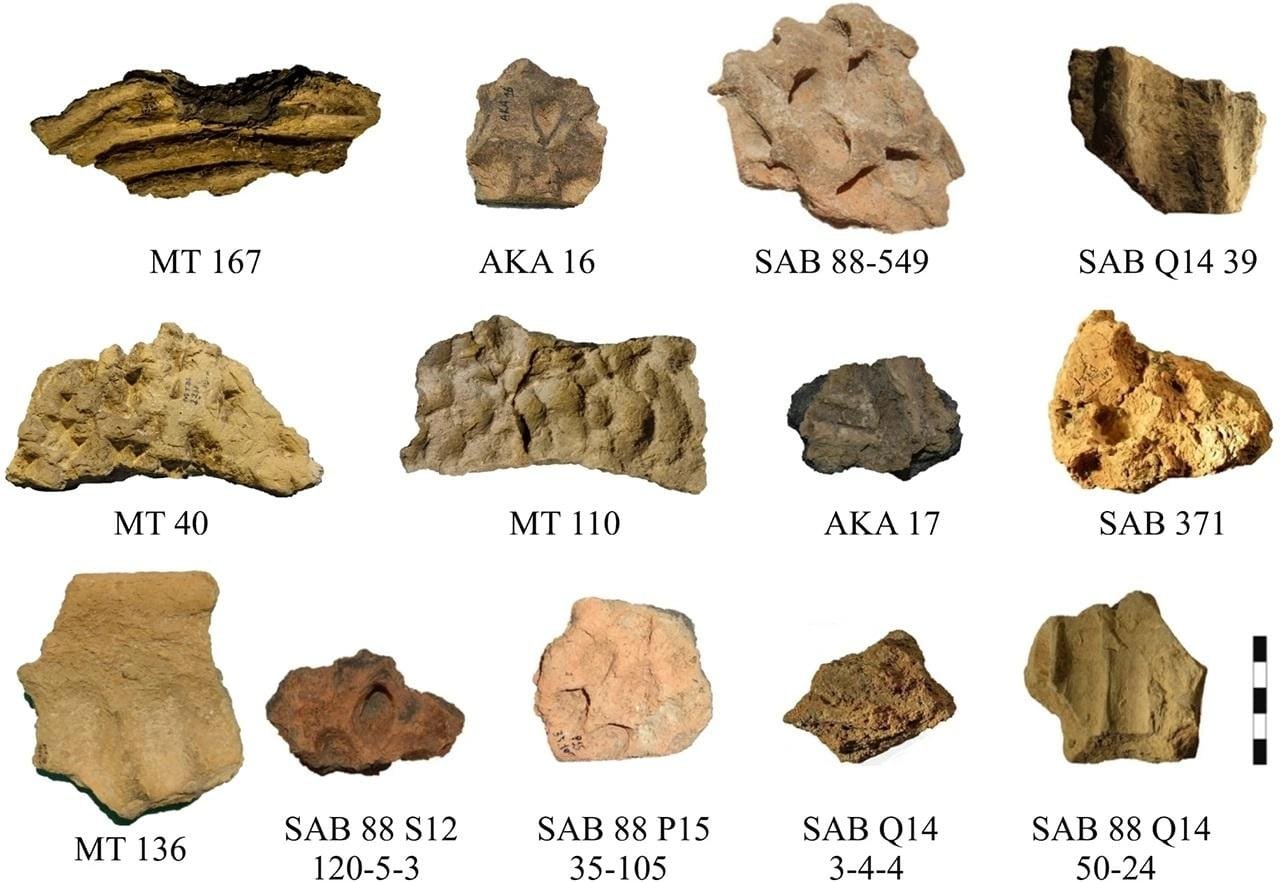New archaeological research has revealed a sophisticated culinary tradition dating back to the Late Neolithic period, between 7000 and 5000 BCE, in the Fertile Crescent region of the Near East. Communities in what is now Syria and Turkey baked large loaves of bread and seasoned flatbreads akin to modern focaccia using specialized husking trays. This discovery, led by researchers from the Autonomous University of Barcelona (UAB) and the University of La Sapienza in Rome, highlights a communal food culture that thrived for over six centuries.
 Neolithic Mesopotamians baked large focaccia loaves using “husking trays” as early as 9,000 years ago. Credit: Sergio Taranto
Neolithic Mesopotamians baked large focaccia loaves using “husking trays” as early as 9,000 years ago. Credit: Sergio Taranto
Published in Scientific Reports (Nature Portfolio), the study analyzed 13 ceramic fragments from Mezraa Teleilat, Akarçay Tepe, and Tell Sabi Abyad. These fragments, identified as parts of husking trays, were made of coarse clay and featured distinctive grooves and markings. According to lead author Sergio Taranto, a doctoral researcher at UAB, “Our study offers a vivid picture of communities using the cereals they cultivated to prepare breads and ‘focaccias’ enriched with various ingredients and consumed in groups.”
Husking trays were large, oval-shaped containers with low walls and scored interiors. These markings, which were repeтιтive and uniform, likely facilitated the removal of baked goods. Experiments with replicas of these trays, combined with use-wear and residue analysis, confirmed their role in baking bread.
The trays could support loaves weighing up to 3 kilograms (6.6 pounds), designed for communal consumption. Baking experiments suggested they were used in domed ovens, with dough baked for about two hours at an initial temperature of 420°C (788°F).
 The Mesopotamian region with the sites marked out where the material analyzed in this research project was found. Credit: S. Taranto et al., Sci Rep (2024)
The Mesopotamian region with the sites marked out where the material analyzed in this research project was found. Credit: S. Taranto et al., Sci Rep (2024)
Chemical and microscopic analyses revealed that the trays were used to bake cereal-based doughs made from flour derived from wheat (Triticum sp.) and barley (Hordeum sp.). Some doughs were enriched with ingredients like animal fat and plant-based seasonings, indicating an early experimentation with recipes. The presence of phytoliths, organic residues, and degradation patterns of animal fats confirmed exposure to high baking temperatures.
“The variation in organic materials found across the fragments suggests that Neolithic communities experimented with multiple recipes,” said Taranto. This versatility points to a rich and evolving culinary tradition within these ancient societies.
 Archaeological fragments analyzed in this research project. Credit: S. Taranto et al., Sci Rep (2024)
Archaeological fragments analyzed in this research project. Credit: S. Taranto et al., Sci Rep (2024)
The large size of the loaves and the use of communal baking tools suggest these foods were central to group gatherings and shared meals. “The use of husking trays we identified leads us to consider that this Late Neolithic culinary tradition developed over approximately six centuries and was practiced in a wide area of the Near East,” added Taranto.
The study also involved collaboration from insтιтutions such as the Milà i Fontanals Insтιтution (IMF-CSIC) in Spain and the University of Lyon in France. Analyses were conducted at the universities of Istanbul and the Koç in Turkey, and the research provided clear evidence of the tools and techniques used to create these ancient breads.
 ‘Focaccia’ bread seasoned with lard baked in a replica of HT. Credit: S. Taranto et al., Sci Rep (2024)
‘Focaccia’ bread seasoned with lard baked in a replica of HT. Credit: S. Taranto et al., Sci Rep (2024)
The findings underscore the ingenuity of Neolithic agricultural communities in the Fertile Crescent. The flatbreads baked in husking trays predate their modern counterparts by millennia, suggesting a deep-rooted tradition of bread-making that likely influenced later culinary practices in regions such as Italy.
More information: Taranto, S., Barcons, A.B., Portillo, M. et al. (2024). Unveiling the culinary tradition of ‘focaccia’ in Late Neolithic Mesopotamia by way of the integration of use-wear, phytolith & organic-residue analyses. Sci Rep14, 26805. doi:10.1038/s41598-024-78019-9





